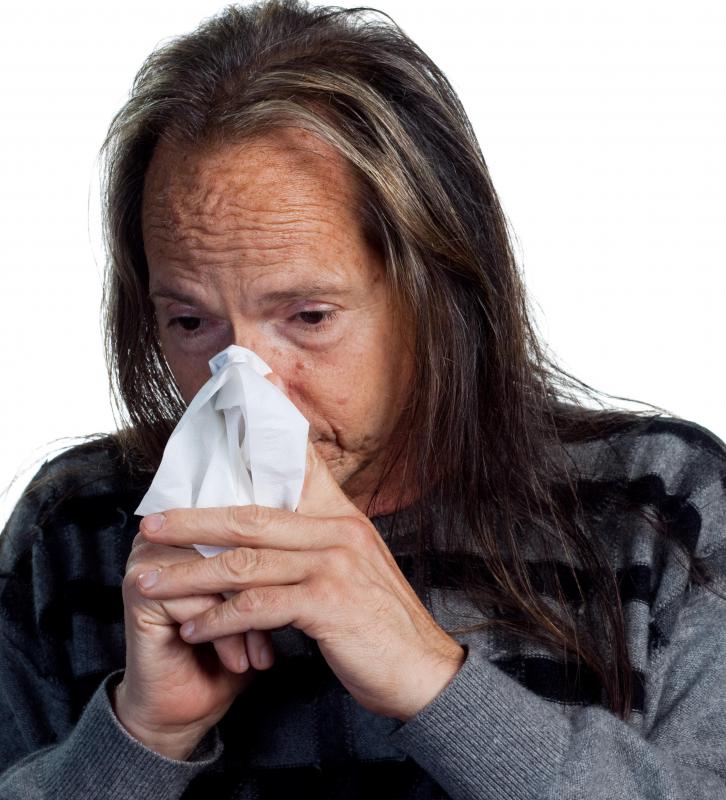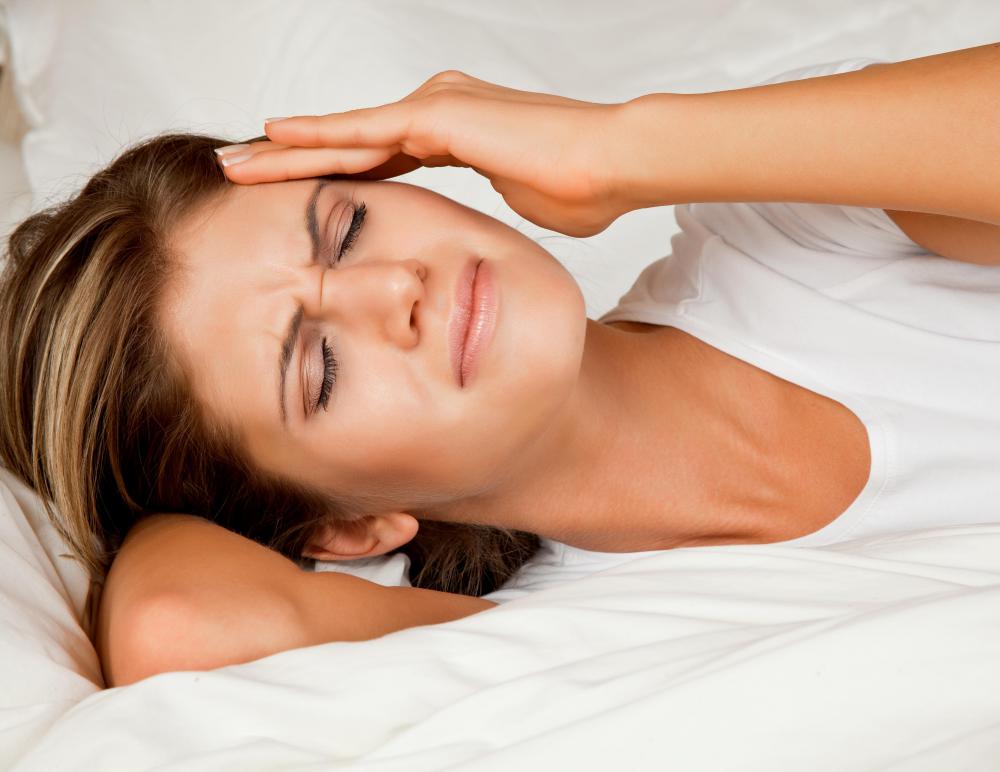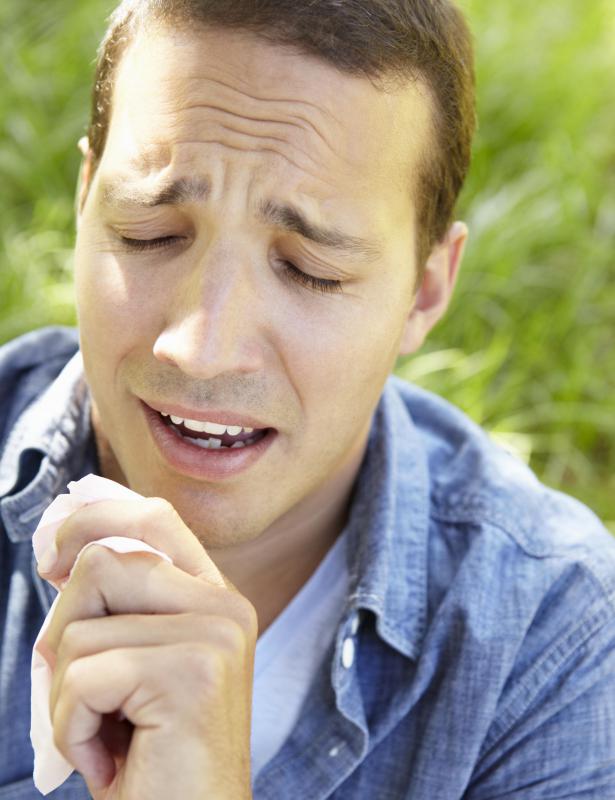At TheHealthBoard, we're committed to delivering accurate, trustworthy information. Our expert-authored content is rigorously fact-checked and sourced from credible authorities. Discover how we uphold the highest standards in providing you with reliable knowledge.
What Are the Signs of an Allergic Reaction to Carpet?
The most common signs of a believed allergic reaction to carpet are headache, skin rash and upper respiratory discomfort. Individuals also have reported problems such as cough, fatigue and breathing problems. There has been no evidence that specifically supports an allergy to carpet, but some people believe that it is possible. With new carpet, this is thought to be the result of breathing 4-phenylcyclohexene (4-PC), a chemical that is often used in the production of floor coverings. A reaction to an older carpet usually develops because of things such as mold, mites or dust trapped in its fibers, not because of the carpet itself.
An allergic reaction to carpet that has recently been installed typically does not last long. The low emission 4-PC chemical fumes usually dissipate within a few days. Some people are sensitive to the smell of the fumes, but others might not notice it at all. The severity of the reaction can vary depending on the materials used as well. Often, the padding and other accessories for installation will also emit fumes.

One of the best ways for a person who has a believed allergic reaction to carpet to avoid symptoms is to stay away from the newly carpeted area for a few days. The fumes can be cleared from the area more quickly with thorough ventilation, such as using fans and keeping windows and doors open. If a carpet is unrolled and aired out before installation, it can help avoid bringing some of the fumes inside. There also are low-emission carpets, padding and other accessories available for people who think that they have an allergy.

Some people are sensitive to things such as dust, mold and mites that can become trapped in old carpets, which can seem like an allergic reaction to carpet. Frequent vacuuming and proper room ventilation can reduce the symptoms by removing irritants from the atmosphere. There have been differing opinions about whether removing carpet can also help with symptoms. Some people believe that the carpet will increase the amount of irritants in a room. Others claim that carpet helps ease allergy suffering by removing irritants from the air and trapping them in its fibers.

If symptoms do not subside with avoidance or cleaning, traditional methods of treating environmental allergies can be used. This can include administration of antihistamines and itch cream. If breathing problems are severe, such as with asthma sufferers, an inhaler or other form of respiratory medication might be prescribed.
AS FEATURED ON:
AS FEATURED ON:

















Discussion Comments
@burcinc-- Do you ever steam clean carpets? I would advise against that because I heard that if someone is allergic to mold, steam cleaning carpets will lead to mold growth in the carpet and cause more allergy symptoms.
Unfortunately, vacuuming isn't the best solution either because mites can remain in the air and return to the carpet soon after vacuuming.
If you know that the carpet is aggravating your allergies, the best solution is to get rid of it. Wood floors or ceramic floors are much healthier.
I recently developed asthma and I know that the carpet is making it worse. I start coughing and wheezing more in a carpeted room. I clean and vacuum all the time but it doesn't seem to be making a difference.
I don't get allergies often but I had one recently after I moved into a new apartment a few days ago. During my first day, I sat on the carpet because my couch wasn't delivered yet. I hadn't had the opportunity for a thorough cleaning either.
Within a few hours of sitting on the floor, I developed a rash on both of my legs. My skin was red, raised and itchy. It did actually occur to me that it could be due to the carpet. I went to the pharmacy and picked up some corticosteroid cream for the rash.
As for the carpet, I had it professionally cleaned and my couch was also delivered the next day. The rash didn't occur again.
Post your comments